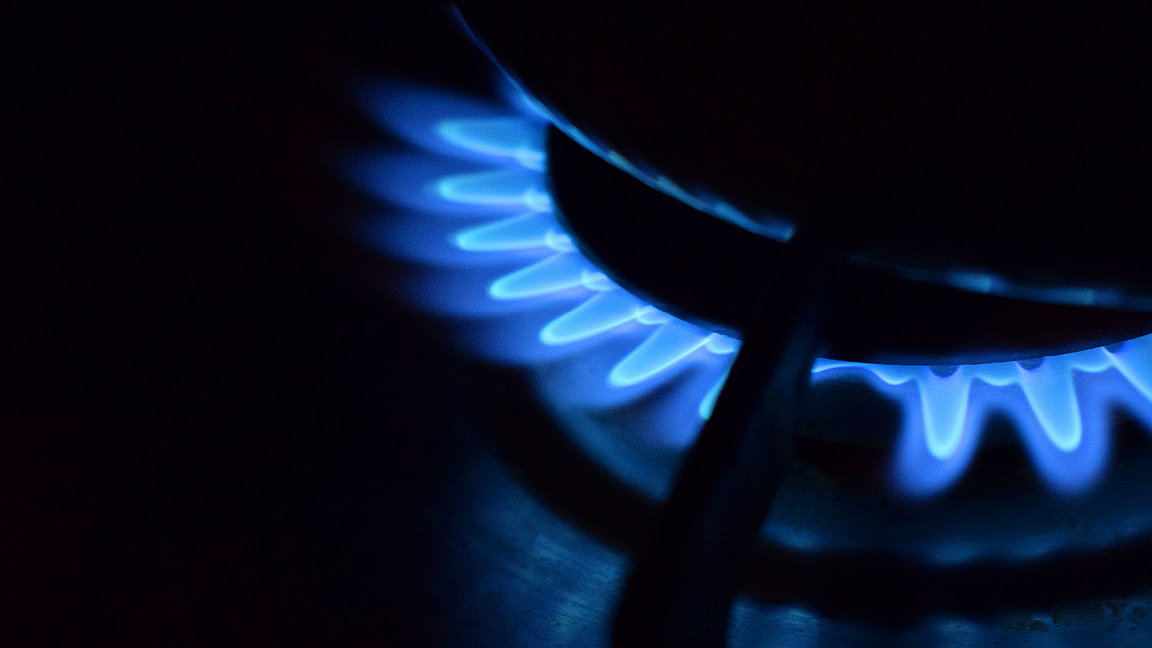
Europe is facing an energy crisis as the price of natural gas soars and the primary method we use to heat our homes becomes a costly commodity.
The price of natural gas in Europe rocketed from €4.38 per megawatt hour in May to €118 in October and has already caused many small-to-medium energy suppliers in the UK to go out of business because of a cap limiting the price they can sell energy at.
Modus spoke to Richard Palmer MRICS from energy consultancy Syzygy to find out why we’re in this position and how it might be prevented in future.
How has the UK ended up facing an energy crisis as winter approaches?
The main cause has been increasing gas demand (following the pandemic) and reducing gas supplies but there have been other factors as well, such as unseasonably low wind generation in the UK (particularly in September 2021) and higher carbon prices. Power prices are correlated to gas prices because gas generation power plants generally still set the marginal cost of electricity.
In Europe and the UK, our gas storage inventories have been much lower going into this winter than in previous years, and this meant that the UK needed gas supplies to step up from pipelines and from liquified natural gas (LNG) to fill storage levels. Otherwise, we knew there could be a significant and continued risk for higher gas prices which has now materialised.
We’ve had lower pipeline gas flows from Russia to Europe than we’ve had previously, partly because they are prioritising their own domestic market and partly because of potential commercial pressure to bring Nord Stream 2 online, which is a gas pipeline running between Russia and Germany. It was meant to have started supplying gas by now but has been delayed. Hopefully it’s coming on stream next year and could relieve some of the supply pressure.
A key factor now, heading towards the winter, is the weather. If we get a cold snap this will have an even bigger influence on energy prices.
Is gas storage capacity an issue too?
Gas storage levels across the UK and Europe are around 70%-75% whereas this time last year they were at 90%-95% (and on average have been 85% full over the past 10 years). But the UK closed Rough (a gas storage facility off the east Yorkshire coast) in 2017, which means we lost 70% of the storage capacity we once had.
Since closing Rough in 2017, the UK has operated a just-in-time approach to gas procurement. The UK has three LNG terminals which provide just over 2m m3 of gas along with eight salt cabin storage facilities used for short term cycling, which have a combined capacity of 1.7bn m3. This compares with the 3.3bn m3 capacity at Rough. Losing Rough in 2017 has had a big impact to our ability to store gas. That said, additional capacity only has value if you can source the supply to store in it.
With the benefit of hindsight, how could this shortage have been avoided?
The tight gas supply has been largely driven by the fundamentals of the global gas market which, with increasing demand, has led to low storage levels. Although around half of our gas supply comes from domestic production which is insulated from global supply and demand pressures. Around 30% of gas to the UK comes from gas pipeline imports – the majority of which is on long-term contracts with Norway. However, another 20% comes from LNG, which critically do not have firm, long term contracts in place.
With higher prices, higher production levels are likely to follow although another compounding problem has been that both Norwegian and domestic gas production in the North Sea has been down due to ongoing maintenance issues at gas fields and terminals.
Therefore, if we look at the structure of how we source our gas it’s about mitigating and managing energy security risk and this demonstrates the importance of ramping up our efforts to decarbonise heat.
“There is particular alarm in the UK because we’ve seen a number of energy suppliers go into liquidation.”
How has the energy crisis affected the retail energy market?
There is particular alarm in the UK because we’ve seen a number of energy suppliers go into liquidation. This is fuelled by two things: the tariff cap for residential customers; and suppliers being able to effectively hedge, or not as the case may be particularly for smaller suppliers, wholesale market prices. Even the best supplier hedging strategies will have struggled in this market.
Some believe this could result in having fewer than 10 suppliers in a year’s time which would affect the government’s objectives for creating competition, innovation and change and suggests the retail market is broken. Also, the government has just announced proposals for switching green levies from electricity to gas to encourage greater uptake of heat pumps, which adds another angle to this situation.
What action should the government take to mitigate any future recurrence?
A re-assessment of our energy policy is required including a focus on transitioning our generation capacity to a more electrified future; in the immediate term we need an understanding of where we are with, for example, our nuclear strategy in this transition and the role of our combined cycle gas turbines (CCGTs), which Boris Johnson now says could be phased out by 2035.
Trade body Regen, for example, is calling on the government to double the capacity for Pot 1 technologies (which includes solar and onshore wind) in the next Contracts for Difference (CfD) auction to 10GW.
We all know we’re trying to transition to cleaner energy as quickly as possible with more wind and solar, greater penetration of energy storage and the debate around hydrogen versus electrification, but I think this gas shortage situation has once again brought it sharply into focus.
Has wind taken a hit in popularity as an energy solution after an unusually low-wind year?
I don’t think so; a lot is spoken about offshore wind but we need onshore wind to come back to the fore and I think most people realise and accept we need to decarbonise as quickly as possible. Although having said that, it will possibly concern people that in mid-February, nearly 40% of Britain’s electricity was provided by wind and then two weeks later it reduced to just 7%.
The bigger structural picture for increasing wind and solar energy is the introduction and viability of longer duration energy storage.
“In mid-February, nearly 40% of Britain’s electricity was provided by wind and then two weeks later it reduced to just 7%”
Do you think in future more homes will be generating their own energy?
Yes definitely. It will become the norm, particularly under the Future Homes Standard. For new builds the opportunity will be for balancing solar energy, heat pumps and electric vehicles (EV). With an EV, in the near future, you could be selling surplus energy back to the grid at peak times.
Getting smarter grid solutions to work well requires getting a high enough concentration of those smarter homes in localised areas for the distribution network to facilitate value and incentives for homeowners.
Richard Palmer MRICS is head of strategic projects at renewable energy specialists Syzygy Consulting. He has been working in energy for 25 years and he is chair of the Electricity Storage Network (ESN) Markets and Revenues working group and is a mentor on Regen's ReWIRE (Entrepreneurial Women in Renewable Energy) network.



